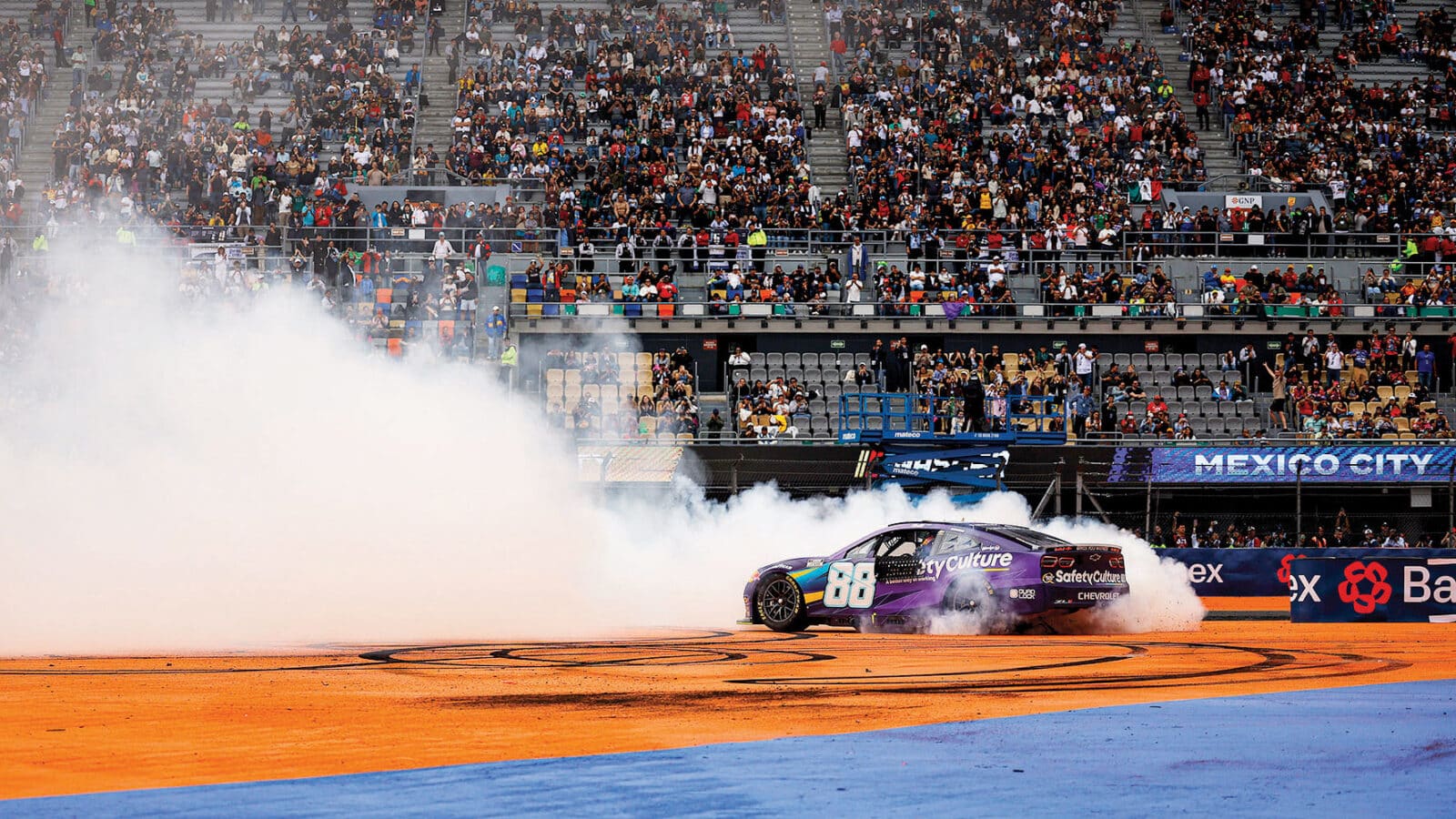Watkins Glen drama shows IMSA is going from strength to strength
John Oreovicz reports on a knife-edge finish for Acura in the Watkins Glen 6 Hours, while NASCAR hops the border to Mexico

The dust is settling after NASCAR’s visit to Mexico City; not all enjoyed the experience
Getty Images
This month’s Postcard… comes datemarked Watkins Glen, a scenic village in the Finger Lakes region of Upstate New York. It’s best known for the racetrack now called Watkins Glen International, which hosted the United States Grand Prix from 1961-80. ‘The Glen’ was a popular destination for the F1 crowd; its position in the latter part of the schedule created a laid-back atmosphere and end-of-term vibe, and a purse considerably richer than any other F1 race certainly didn’t hurt.
When Bernie Ecclestone transformed the economics of Formula 1, Watkins Glen was unable to maintain its position on the calendar. IndyCar, in the early stages of the CART era, failed to catch on. That left it down to NASCAR to save the iconic racetrack. The Bud at The Glen Cup Series race inaugurated in 1984 and quickly grew in popularity, NASCAR’s road course equivalent to Talladega in terms of the scope of its camping scene.
For some 30 years, Watkins Glen was one of only two road races on the 36-race Cup schedule. The France family’s International Speedway Corporation wing (now folded into NASCAR) has now managed the track for more than 40 years, and the NASCAR event on the 2.45-mile original short course is joined by a six-hour IMSA sports car race on the full 3.45-mile circuit.
IMSA is going from strength to strength these days, and the Watkins Glen event was no exception. An unpredictable race saw incoming championship leader Felipe Nasr drive from 10th to the lead on a damp track in the first seven minutes, only to see Nick Tandy write off the car (and their points lead) in the fifth hour. Fresh off a sweep of the front row at Le Mans, it looked like Cadillac would score its first win of the 2025 season, until Earl Bamber peeled into the pits for fuel with a lap to go. That handed the win to the Acura of Colin Braun and Tom Blomqvist, who finished with just 1% usable energy, according to IMSA telemetry.
“The Acura of Braun and Blomqvist finished with just 1% usable energy”
While Watkins Glen has the history, the racetrack doesn’t have the charm and ambience – not to mention the outstanding concession stand food – of Road America, where IndyCar was racing on the same weekend. This was another race won by fuel management, as six-time series champion Scott Dixon’s ambitious strategy fell short by a couple laps and a late splash-and-go relegated him to ninth place. The victory, not surprisingly, went to Álex Palou, who bounced back from his two least competitive outings of the season to strengthen his grip at the top.
The big news to come out of IndyCar was official confirmation that a new car is forthcoming to replace the ancient 2012 Dallara platform in 2028. To the surprise of no one, it will be another Dallara spec car that will feature “a look designed to appeal to a new generation of fans while keeping styling cues recognised by all as an [Indycar]”. The engine formula is essentially the same, a slightly enlarged 2.4-litre turbo V6 with continued use of the controversial hybrid system.
It’s great that the series is finally getting a much-needed new car, but it’s also sad to reflect on IndyCar racing’s history through the late 1990s, when the sport was built on technological innovation and open competition between chassis, engine and tyre manufacturers. Those halcyon days are unlikely to ever return, so all we can do is hope that Dallara and Ilmor (the crystal ball says Honda will be gone) hit a home run with a spec car that looks and sounds great and races well across IndyCar’s wide spectrum of racetracks.
Meanwhile, NASCAR headed to Mexico City for the Cup Series’ first ever race outside US soil. The stock car set was received warmly by the locals but their gracious attitude was not shared by many within the NASCAR community and the traditional ‘America only’ NASCAR audience. This subset of fans focused on the security duty that escorted the ‘haulers’ to and from the Texas border to Mexico City, conveniently ignoring that the US has a serious gun problem and some of the most dangerous cities on the planet.
Tab Boyd, a long-time ‘spotter’ (whose job is to relay info to drivers), most recently for Ricky Stenhouse Jr, was fired by Hyak Motorsports after complaining on social media that he was scammed for cash in a so-called ‘good area’ of the city. Stenhouse was bumped out of the race by NASCAR’s newest bad boy Carson Hocevar, prompting Stenhouse to declare he’d “kick his ass” when they were back on home turf.
For his part, Hocevar called Mexico City a “shithole” on a podcast and was promptly fined almost $50,000 (£37,000) and ordered to complete a sensitivity training programme by Spire Motorsports. Hocevar quickly backtracked and apologised, saying he was repeating opinions he had heard from others, and once he stepped out and experienced Mexico City himself, he was fine with it.
The Mexico City race was won by New Zealander Shane van Gisbergen, who hasn’t had to deal with the ‘foreign driver’ stigma like the likes of Daniel Suárez and Juan Pablo Montoya, most likely because English is his first language. The more things change in NASCAR – and it will definitely continue to evolve – the more they stay the same.
Based in Indianapolis, John Oreovicz has been covering US racing for 30 years. He is author of the 2021 book Indy Split

